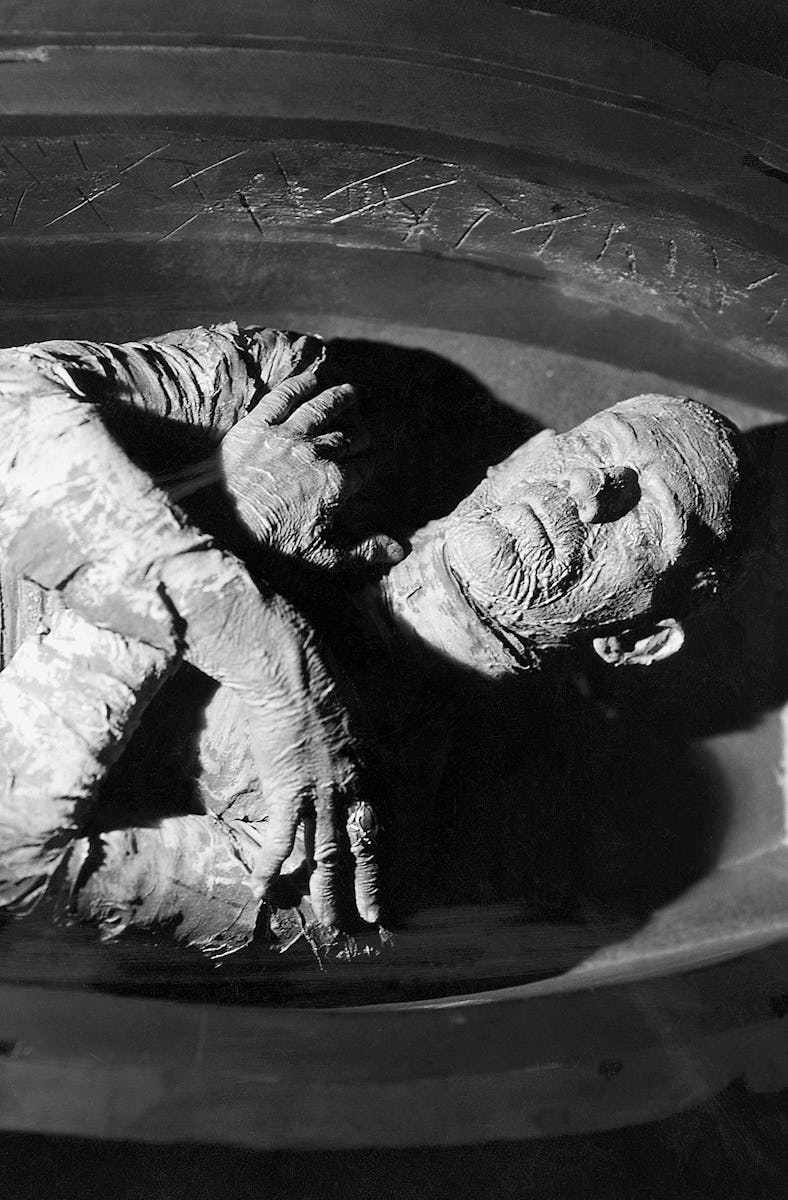Why The Mummy Remains The Scariest Universal Monster
There’s never been a better time to pick up the 1932 movie that started it all.

When this author was a wee lad, the sight of the rotting, bandage-wrapped remains of a mummy named Kharis, in a rerun of an old 1940 movie called The Mummy’s Hand, disquieted me enough to turn off the movie and go right to bed. The mummy, which first became a horror staple as part of the first wave of Universal monster movies back in the 1930s, seems to have that effect on a lot of people ever since the opening of Egyptian pharaoh Tutankhamun’s tomb in 1922 — along with a popular fascination with the so-called “curse of the pharaohs” — led Universal Studios to produce The Mummy in 1932.
Directed by Karl Freund (previously the cinematographer on Fritz Lang’s Metropolis and Tod Browning’s Dracula), the film starred the legendary Boris Karloff as Imhotep, an ancient Egyptian high priest who is mummified and buried alive after trying to use a sacred spell to revive his dead lover, Princess Anck-es-en-Amon. When Imhotep himself is accidentally revived thousands of years later, he disguises himself as a historian named Ardath Bey and enacts a plan to murder and resurrect a woman named Helen Grosvenor (Zita Johann), who is the reincarnation of his lost love.
As a film, The Mummy (newly reissued in a 4K Ultra HD Steelbook edition) has a certain lyricism and dreamlike quality to it, but it is also — not uncommon for its era — a rather static parlor melodrama for most of its 73-minute running time. The film’s placement in the pantheon of the classic Universal monster films relies mainly on the formidable presence of Karloff, who generates an otherworldly stillness in the role of Imhotep/Ardath Bey, and three scenes in particular.
The first is the truly unsettling opening, where Imhotep (seen for the only time in the iconic bandages) is revived by the reading of the Scroll of Thoth and drags himself over to the archaeologist holding said scroll, who promptly unleashes one unnerving howl of laughter after another as he goes insane at the sight. The second is the flashback to Imhotep’s punishment, where his body is shrouded in bandages but his still-uncovered eyes blaze with horror as he is entombed alive. The third is the film’s finale, where a statue of the goddess Isis comes to life before Imhotep can finish his mission and turns him into dust.
The Mummy was a commercial success, and although it took Universal eight years to begin churning out sequels, they appeared in rapid succession: The Mummy’s Hand swapped out Imhotep for Kharis, played by Tom Tyler in that film and Lon Chaney Jr. in three more: The Mummy’s Tomb (1942), The Mummy’s Ghost (1944), and The Mummy’s Curse (1945). Hammer Studios picked up the mantle from the late 1950s through the early ‘70s, with the unrelated, non-sequential The Mummy (1959, featuring Christopher Lee in the title role), The Curse of the Mummy’s Tomb (1964), The Mummy’s Shroud (1966), and Blood from the Mummy’s Tomb (1971).
It was Karloff, however, whose performance remains the most haunting. His initial appearance in Jack Pierce’s astonishing makeup remains an iconic moment in horror, and even his less decrepit but still wizened Ardath Bey incarnation, with his unfathomable eyes and skin like parchment paper, is quietly eerie. Starting in that original 1932 film, and present to some degree in all succeeding mummy movies — until the property was rebooted as an action franchise in 1999 with Brendan Fraser — are the key components that make the mummy perhaps scarier than any of his Universal colleagues.
While monsters like Frankenstein’s creation and Dracula represent a kind of life after death, the mummy is death incarnate…death walking. We’re fascinated with cinematic mummies for the same reason we’re drawn to see real ones in museums all over the world: they give us a close-up view of what happens to our bodies after we perish and a window into our mortality. Unlike zombies, movie mummies have always been rather slow-moving, yet somehow find their victims — a metaphor for death itself, and the way we always feel it lurking over our shoulder and know it will get us eventually.
The mummy also taps into the sense of mystery and the exotic that accompanies the exploration of cultures and civilizations long vanished from the face of the planet (and yes, there are whiffs of racism, colonialization, and cultural appropriation among many of the older movies, just like when real-life mummies were first displayed as little more than glorified sideshow attractions). There is also the enigma of their burial customs. Just what did ancient Egyptians expect to find in the afterlife? Finally, mummy movies tapped into one of our most horrific fears — being buried alive.
It's for these reasons that the mummy remains the most compelling, creepiest, and scariest of the Universal monsters. It’s also why a truly frightening horror movie could still be built around this implacable, unknowable, tottering harbinger of death and decay. After the Fraser-based franchise from the turn of the millennium and the failed 2017 Tom Cruise reboot — both squarely in the action genre — I’d like to see a mummy movie that sends me scrambling back under the covers again.